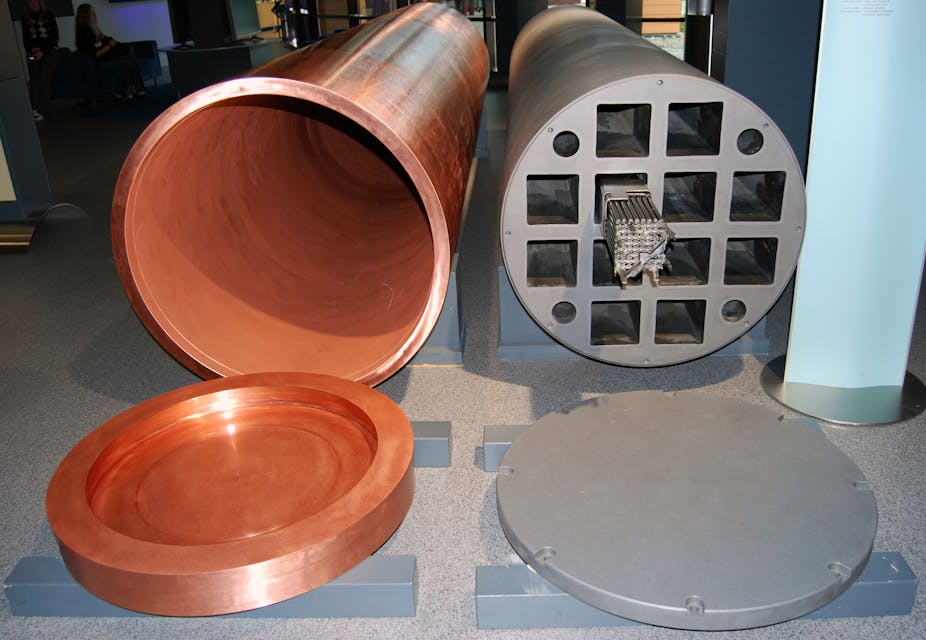It was said originally that nuclear-powered electricity would be “too cheap to meter”, but in the current climate it is nuclear’s capacity to deliver secure, low-carbon energy that appeals. We all use radioactivity. About 15 to 20% of Britain’s electricity is nuclear powered, and we also benefit from medical uses of radioactivity - X-rays to examine teeth and bones, and whole-body MRI scanners. While somewhat more controversial, the UK is also defended by nuclear-powered submarines and nuclear weapons.
While we may reap some benefits of our ability to harness radioactivity, there are also costs to pay. The waste from the UK’s nuclear power stations is managed at the huge Sellafield nuclear re-processing site in west Cumbria. This week, its owner Sellafield Ltd will be sentenced at Carlisle Crown Court for sending low-level radioactive waste to a municipal dump by mistake.
Sellafield Ltd and its predecessor companies have a long history of safety breaches. In 2005 a large but contained leak from Sellafield’s THORP fuel re-processing plant went undetected for nine months. In January the Public Accounts Committee blasted Sellafield management as “expensive” and “lax”, in a report that put the clear-up cost of the site at more than £65 billion. And in May 2013, the wrong acid was very, very, nearly used in the THORP reprocessing plant.
These are costs to pay. But more shockingly still is that, 57 years after the first reactor at Calder Hall was connected to the grid, there is still no agreed long-term solution with what to do with the UK’s nuclear waste.
About 75% of Britain’s nuclear waste is stored at Sellafield, classified according to its radioactivity. Very low level waste can be buried in licensed landfill as the risks to human health are minimal. One such site is at Drigg, a few miles from Sellafield. Intermediate and high level waste has not yet been successfully stored for the long term, and needs to be isolated deep below ground. A current programme of waste conditioning gradually takes the intermediate wastes (about 300,000m3), compresses and encases them in concrete-filled steel barrels.
The UK has a growing tonnage of highly radioactive spent fuel, and is also the proud holder of more than 100 tonnes of weapons-grade plutonium. Both could be used as fuel, in the appropriate type of reactor, but no such innovation is currently planned. Instead their containment is temporary, potentially subject to misappropriation or sabotage. Securely encasing this for more than 100 years is by far the most urgent priority.
Britain’s worst nuclear accident - a fire at the Windscale plant in 1957 - produced highly toxic and radioactive waste which has still not been safely processed or packaged at Sellafield. Half a century later, it remains in open-air, water-filled concrete tanks. That is truly remarkable. It is likely these will remain on the surface for decades or even centuries longer.
High level wastes (about 2,000 m3) are chemically treated and then vitrified - encased in glass - which transforms them into something analogous to natural minerals, where the radioactive atoms are locked into physically stable minerals.
Long-term disposal of wastes was not properly considered in the UK until the 1970s. By then, Sellafield had discharged many tonnes of radioactive waste including Technitium99 into the Irish Sea. This was not halted until legislation was passed in 2004. A programme of investigative drilling at sites for geological long-term disposal began in remote locations. The concept was to construct an underground tunnel network for deep burial. But it was scrapped after local, largely uninformed, public opposition.
Designs adopted from Swedish research should, in the correct setting, be more than capable of achieving the legal target set in the UK: a human death rate of no more than one in one million per year in the exposed population, for each of the million years into the future for which a deep disposal site must function. The radiological containment is based on physical and chemical barriers around the waste, reinforced by explicitly favourable geological containment.
About 25% of wastes from civil and military uses are in temporary surface storage at tens of sites around the UK. In England, you are seldom more than 50km from radioactive waste.
The final disposal concept remains much as the 1970s – to construct a suitable tunnel grid, deeper than 500m, in which to place the wastes for many, many decades. But in January, Cumbria County Council rejected for the second time a government-backed proposition to set up a deep excavation for geological disposal near Sellafield.
The costs of such deep burial is unknown. The government has quoted £10 billion, while other commentators have predicted £30 billion. These are costs that drive up the true lifetime cost of nuclear powered electricity to exceed many renewable sources. Secure, low-carbon supplies of energy are not cheap, although continuing to use fossil fuels will undoubtedly cost us far more in the future. But for now the question of nuclear waste disposal is unresolved, and we are leaving an unpaid bill for future generations.

